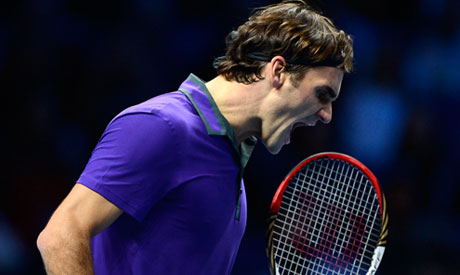 How do you measure the “greatest of all time”? Some would say, if you could transport all the players in time and have them compete against each other, who would win. That would favor modern players who hit harder than ever before. Heck, even a relatively unknown Gilles Simon would probably easily beat a Don Budge or a Bill Tilden and possibly even Jimmy Connors. We often compare greats against greats that we don’t consider the possibility that a player ranked 20 might beat players from two decades ago or three decades ago.
How do you measure the “greatest of all time”? Some would say, if you could transport all the players in time and have them compete against each other, who would win. That would favor modern players who hit harder than ever before. Heck, even a relatively unknown Gilles Simon would probably easily beat a Don Budge or a Bill Tilden and possibly even Jimmy Connors. We often compare greats against greats that we don’t consider the possibility that a player ranked 20 might beat players from two decades ago or three decades ago.
One could measure accomplishments. However, those can be difficult to measure. For example, John McEnroe idolized Rod Laver and would frequently point two his two Slams as evidence he was the best of all times. It seems simple enough, but one of his Slams came as an amateur when the best players in the world were professionals like Rosewall and Gonzales. If the pros had been allowed to play, perhaps he would never have won that first Slam.
But the argument was that Laver turned pro and eventually figured out how to beat the best players, and thus his second Slam. One could retort that by speculating that Laver might have started off the tour with numerous losses. The confidence he built as an amateur winning Slams may have carried him through the initial dark days of him turning pro.
And then there’s the odd fact that 3 of the 4 Slams played in those days were on grass. What if it were like today and two of the surfaces were on hard courts?
The other player that gets the nod is Roger Federer. On the plus side, he’s been number 1 for more weeks than any other player. At 302 weeks, he’s now more than a dozen weeks over Pete Sampras. He’s won more Slams than Sampras. He’s got a career Slam, which Sampras does not have. He’s reached more French finals than Sampras (who reached none). He’s tied Sampras in number of Wimbledons won. He won 5 consecutive US Opens. He’s still on a huge streak with 34 consecutive Slams with a quarterfinal appearance or better.
Although he’s never won a Slam, Federer has won 3 of 4 Slams on three separate years (2004, 2006, 2007) and came within a set of doing that in 2009.
Federer is now fourth on the all-time list, one title short of John McEnroe. He should move ahead of McEnroe in 2013. Lendl’s 94 titles is still rather daunting, however. He is fourth on the all-time match wins with 878 having recently passed McEnroe. With a good year, he should pass Vilas who has 921 wins.
If Federer had won a Grand Slam, the discussion would likely be closed given all his other accomplishments.
The detractors point out that Federer has a huge losing record to Nadal, though most of his losses occurred on clay, Nadal’s best surface. Federer also has a narrow losing record to Murray. He is still a little ahead of Djokovic however.
The Slam obsession is a challenge because many players of the 1970s skipped the Australian Open frequently especially once it moved to December. Borg and Connors rarely played the event. Similarly, players would skip the French Open. Connors didn’t play the French all that often. Had Borg, for example, played the Australian regularly, he might have been 5-time champ there and he’d be considered the greatest of all time (the US Open would have been a blemish).
Right now, until Nadal or Djokovic make more progress, they’ll be in that next tier of very good, but not Federer level, at least in terms of accomplishments.
And can we even compare Federer to women? Martina has 9 Wimbledon wins. Graf won the Grand Slam and a gold medal. She won every Slam at least 4 times. Martina has won Slams in singles and doubles. Most tend to treat the games separately given the trend of top women dominating the sport.
And how much does this even matter? It’s fun to discuss, but probably hard to definitively answer.




![[US Open Men’s Final] Can Djokovic beat Nadal in the finals?](https://www.essentialtennis.com/wp-content/uploads/2013/09/20130909djokovic-500x383.jpg)


![[French Open] The tactics of the Djokovic-Nadal semifinals](https://www.essentialtennis.com/wp-content/uploads/2013/06/20130607nole-500x383.jpg)